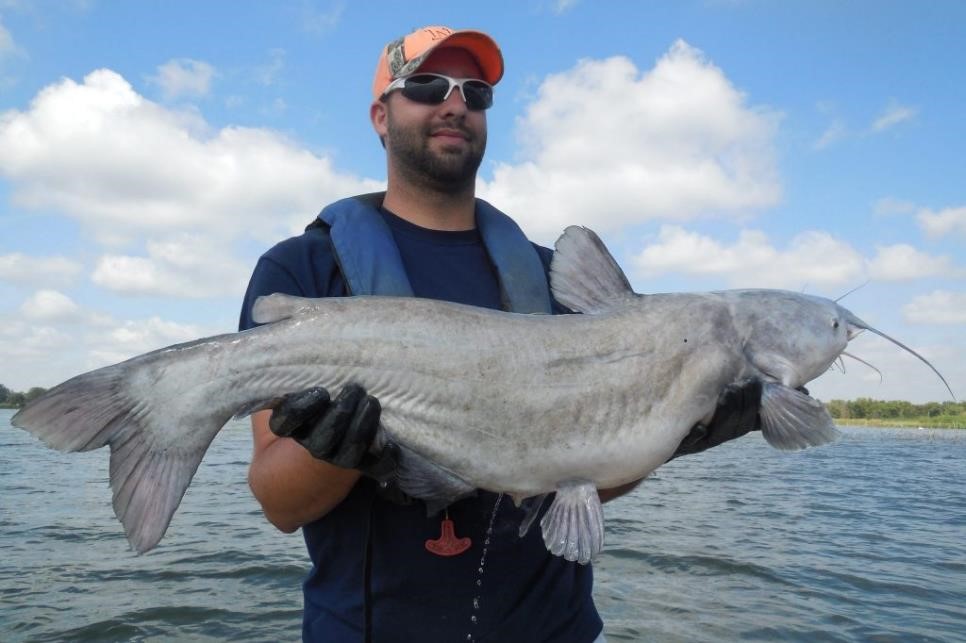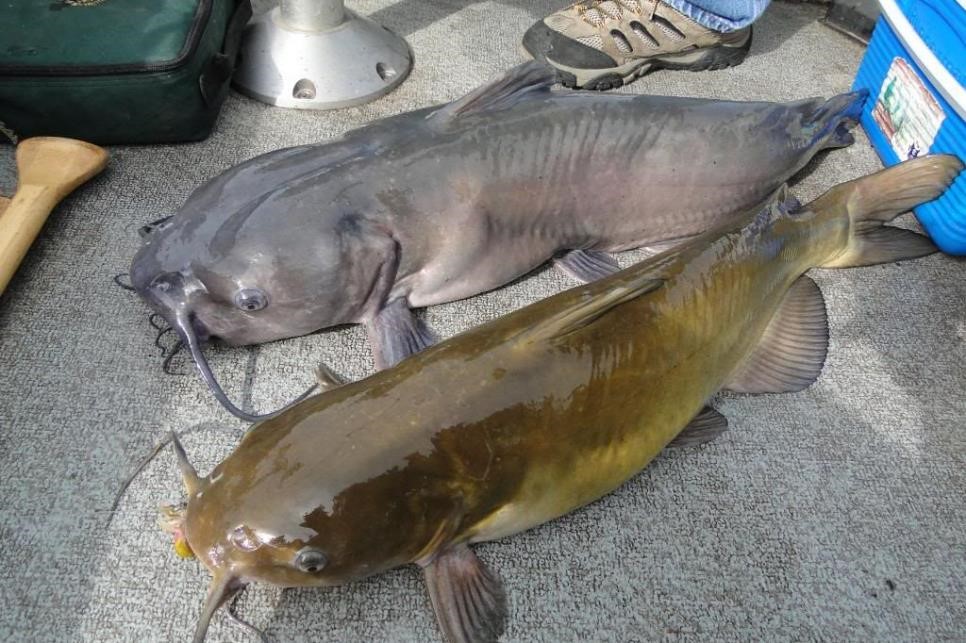
By Daryl Bauer, Fisheries Outreach Program Manager
Our large catfish species are the last to spawn in Nebraska waters. As June progresses into July, male catfish will be setting up in spawning cavities and doing their thing.
As the spawning period comes, there can be some confusion about catfish identification. Have had a few questions and seen some mistaken identifications in the past couple of weeks.
Everyone knows it when they catch a catfish because, well, they have “whiskers” or barbels. Blue, flathead and channel catfish can be found in Nebraska waters. Channel cats are by far the most widespread and common.
Some of the confusion comes about because channel catfish, especially small channel cats, often have black spots. It is true that a catfish with spots is almost always a channel catfish. However, most adult channel catfish do not have spots. Mistakenly, channel cats with a grayish color and no spots can be called blue catfish. The absence of spots does not make them blue catfish.
Coloration is a very “plastic” or variable characteristic of fish. It changes from fish to fish, even from time to time on the same fish. Although color is one trait that can be used to identify fish, it should NOT be the only feature considered.
The definitive way to identify our large catfish is to start by looking at the tail, or caudal fin. Flathead catfish have rounded tail fins, blue and channel cats have forked.
Next, the anal fin is different between blues and channels. The margin of the anal fin will be straight on blue catfish, curved outward on channels. Furthermore, channel catfish have 24-29 rays in the anal fin, blue catfish have 30-35.
If a person has the opportunity to handle all three of Nebraska’s large catfish species, the differences are more obvious. Unfortunately, most anglers do not have often catch all three species. If you have not caught all three, the quest for a “Nebraska catfish slam” would be a worthy goal.
Surfing the interwebs, I found some photos that do an excellent job of showing the catfish differences. I am stealing these photos from the internet, but I will tell you exactly where I found them. . . .
During the spawn, male channel catfish develop a different coloration, a darker coloration, maybe a more grayish coloration, and usually, they do not have spots. In addition, the heads of male channels will swell. To illustrate, found this photo on an Iowa Sportsman’s Forum (NOTE: It appears this forum is now defunct, I cannot find my way back to it).

Telling the difference between male and female channel catfish is not always that easy. It ain’t, but during the spawn period it can be easier. Certainly, those two fish look like they may be entirely different species. Nope, both channel cats, but the male has the bulging head and a different coloration. Again, notice, no spots on either fish.
Then I found this photo, this one from the Kentucky Department of Fish & Wildlife Resources, http://fw.ky.gov/Fish/PublishingImages/GR4G01.JPG . Love this photo because is shows the three large catfish species side by side by side. Yes, there is a difference in the sizes of the fish, but this is a good visual display of the species, channel on top, blue in middle, flattie on bottom.

Not getting hung up on colors, notice the body shapes of those three different catfish. Especially, notice the difference in head shapes between the blue and channel cats. That is why I say the differences are obvious if you are ever able to handle all three species.
As the catfish progress into their spawn period fishing can be good. Have heard lots of reports of good catfish fishing in recent weeks. Many of those fish have been caught in relatively shallow water. That is evidence those fish are feeding to get ready to spawn; also roaming shallow looking for potential spawning locations. Catfish are cavity-spawners, they prefer some type of hole where the male will make a bed and defend it. They will use a variety of other cover objects if no holes are available.
So, how about the fish in the feature photo for this blog? What was it?
